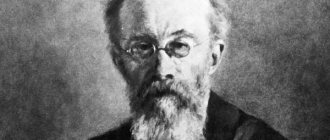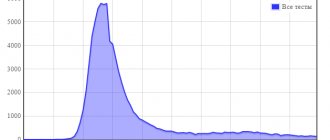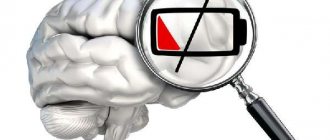A little about the thought process
We understand the world through sensations and perceptions and only then through thinking. The function of the latter is to expand the boundaries of knowledge by going beyond the boundaries of feeling. That is, it helps, through inference, to reveal what we cannot know based solely on perception.
Thinking paves the way to knowledge that cannot be obtained in any other way. This is a problem solving process. The latter involve questions to which there are no direct answers. They are hidden in the source data. By transforming them through logic, a solution can be found.
Thinking is also defined as the process of generalized cognition of reality. That is, obtaining general information about it occurs at the level of terms.
Mental problems are solved using:
- Analysis. It is a mental operation by which a whole is divided into its component parts. This is where the research begins.
- Synthesis. Involves the mental and practical process of combining fragments into a single picture. This operation is the opposite of analysis, but they are both complementary. If information about a problem is unclear, analysis is required first.
- Comparisons. Objects are compared to find common features and differences.
All people are individual and have different ways of thinking.
About the quality of mind
Personal differences in an individual's thought process are manifested in the different qualities of the mind that he demonstrates when carrying out activities. The most significant of them are:
- Independence of thinking. It is expressed in a person’s ability to express his opinion, set goals and objectives, find answers and make decisions, without resorting to the help of other people. The independence of the mind is inextricably linked with its criticality, the ability not to accept other people’s judgments, but to evaluate them strictly and correctly, to distinguish between strengths and weaknesses, to highlight the main thoughts and the mistakes that were made in them.
- Latitude. Characterized by a comprehensive outlook, a desire to learn new things, and self-improvement in various fields of science and practice.
- Depth. The greatest property that allows a person to look deep into a problem, see details that others do not notice, find a way out and predict further development.
- Flexibility. Allows a person to quickly revise decisions made, correct incorrect ones, and in a new, extraordinary way. The individual does not use standard methods for solving a problem. For example, a student with a flexible mind can easily find the answer in different ways.
- Rapidity. Expressed in the speed of problem solving and thinking process. Depends on experience, accumulated knowledge and skills. Quickness of thought is required from an individual in case of making a quick decision. It has nothing to do with hasty thinking, when a decision is made “hastily”, “somehow”, a person clings to the first thoughts that come to mind without checking them, and does not take into account all the data necessary to solve the problem.
- And criticality. This property allows an individual to give an objective assessment of the negative and positive characteristics of phenomena. And also scrupulously, with restraint and composure, check the truth of decisions.
So, we briefly went over the basic qualities of the mind. Let's take a closer look at the latter.
Qualities of thinking and individual thinking styles
Breadth of thinking is the ability to cover the entire issue, without at the same time missing the details necessary for the matter. Depth of thinking is expressed in the ability to penetrate into the essence of complex issues. The quality opposite to the depth of thinking is the surface of judgments, when a person pays attention to the little things and does not see the main thing.
Independence of thinking is characterized by a person’s ability to put forward new problems and find ways to solve them without resorting to the help of other people. Flexibility of thought is expressed in its freedom from the constraining influence of techniques and methods of solving problems fixed in the past, in the ability to quickly change actions when the situation changes.
Quickness of mind is a person’s ability to quickly understand a new situation, think about it and make the right decision.
Haste of the mind is manifested in the fact that a person, without thoroughly thinking through a question, picks out one side, rushes to give a solution, and expresses insufficiently thought-out answers and judgments.
A certain slowness of mental activity may be due to the type of nervous system - its low mobility.
“The speed of mental processes is the fundamental basis of intellectual differences between people” Eysenck
Criticality of mind is a person’s ability to objectively evaluate his own and others’ thoughts, carefully and comprehensively check all put forward provisions and conclusions. Individual characteristics of thinking include a person’s preference for using visual-effective, visual-figurative or abstract-logical types of thinking.
The following individual thinking styles can be distinguished (A. A. Alekseev, L. A. Gromova).
The synthetic style of thinking manifests itself in creating something new, original, combining dissimilar, often opposing ideas, views, and carrying out thought experiments. Synthesizer's motto: "What if...". Synthesizers strive to create the broadest possible, generalized concept that allows them to combine different approaches, “remove” contradictions, and reconcile opposing positions. This is a theoretical style of thinking, such people like to build theories and build their conclusions on the basis of theories, they like to notice contradictions in other people’s reasoning and draw the attention of people around them, they like to sharpen the contradiction and try to find a fundamentally new solution that integrates opposing views, they tend to see the world constantly changing and love change, often for the sake of change itself.
The idealistic style of thinking is manifested in a tendency to intuitive, global assessments without carrying out a detailed analysis of problems. The peculiarity of Idealists is an increased interest in goals, needs, human values, moral problems, they take into account subjective and social factors in their decisions, strive to smooth out contradictions and emphasize the similarities of different positions, easily, without internal resistance, perceive various ideas and proposals, successfully solve such problems problems where important factors are emotions, feelings, assessments and other subjective aspects, sometimes utopianly striving to reconcile and unite everyone and everything. “Where are we going and why?” - a classic question from Idealists.
The pragmatic style of thinking is based on direct personal experience, on the use of those materials and information that are easily available, trying to obtain a specific result (albeit limited), a practical gain, as quickly as possible. The motto of the Pragmatists is: “Anything will work”, “Anything that works” will do. The behavior of Pragmatists may seem superficial and disorderly, but they adhere to the following attitude: events in this world occur uncoordinatedly, and everything depends on random circumstances, so in an unpredictable world you just have to try: “Today we’ll do this, and then we’ll see...”. Pragmatists have a good sense of the situation, supply and demand, and successfully determine tactics of behavior, using the prevailing circumstances to their advantage, showing flexibility and adaptability.
The analytical style of thinking is focused on a systematic and comprehensive consideration of an issue or problem in those aspects that are determined by objective criteria, and is prone to a logical, methodical, thorough (with an emphasis on detail) manner of solving problems. Before making a decision, Analysts develop a detailed plan and try to collect as much information, objective facts, and deep theories as possible. They tend to perceive the world as logical, rational, orderly and predictable, and therefore tend to look for a formula, method or system that can provide a solution to a particular problem and can be rationally justified.
The realistic style of thinking is focused only on the recognition of facts, and “real” is only what can be directly felt, personally seen or heard, touched, etc. Realistic thinking is characterized by specificity and an attitude towards correction, correction of situations in order to achieve a certain result. The problem for Realists arises whenever they see something is wrong and want to fix it.
Thus, it can be noted that the individual style of thinking affects the ways of solving problems, methods of behavior, and personal characteristics of a person.
Criticality
A person with a critical mind carefully checks his assumptions, not accepting every mental decision that comes to him as truth until he is sure of its correctness. The critical mind is an organized mind that makes extensive use of the imagination, relying on it to create something new. And at the same time, he has the ability and ability to hold back the work of fantasy, which leads along the wrong path to unrealistic, unrealistic projects.
Independence and criticality of the mind are an excellent tandem of prerequisites for creative, innovative activity of an individual.
Indirect character
When creating connections and relationships with things, a person can rely not so much on his immediate feelings and sensations, but on the information of previous experience stored in his memory. This conditioning of thinking from past experience is clearly visible when a collision occurs with consequences, thanks to which a person determines the cause of the phenomena.
For example, if there is snow on the street early in the morning, then a person can understand the reason for this, which is the snowfall at night. The memory of previously experienced events helps a person to determine this relationship. So, if these memories were absent, it would be difficult for a person to find the cause of the event.
Finished works on a similar topic
- Course work Features of thinking 490 rub.
- Abstract Features of thinking 220 rub.
- Test work Features of thinking 210 rub.
Receive completed work or specialist advice on your educational project Find out the cost
Thinking also has an indirect character when openly observing the interrelations of an event. For example, when a person sees how wet asphalt on the street is drying under the sun's rays, then he understands the reason for this event because during observation, a memory of a similar situation that happened before surfaced in his memory.
Sequence of thought
Another quality of the human mind. This is a strictly consistent mind. Manifests itself in the ability to follow a strict logical chain in the study of a phenomenon, as well as the natural reasoning of thoughts and a clear logical process.
A person of consistent mind in his thoughts sticks to one problem, without jumping to another. When studying a difficult problem, one follows a specific method of consideration. Having formed thoughts, he traces the order in which information is released, adhering to the planned plan. There are no logical errors in his thinking. If he considers certain conclusions to be true, then without fear or fear he draws all the conclusions that emerge from them. He strives to find more evidence for his judgments.
Individual characteristics of thinking
Individual characteristics of thinking in different people are manifested primarily in the fact that they have different relationships between different and complementary types and forms of mental activity (visual-figurative, visual-effective and conceptual (abstract) thinking). Individual characteristics of thinking also include other qualities of cognitive activity:
- Independence of thinking,
- Flexibility of thinking.
- Efficiency of thinking.
Independence of thinking
Independence of thinking is manifested primarily in the ability to see and pose a new question, a new problem and then solve them on one’s own. The creative nature of thinking is clearly expressed precisely in such independence.
Flexibility of thinking
Flexibility of thinking lies in the ability to change the initially planned path (plan) for solving problems if it does not satisfy the conditions of the problem that are gradually identified in the course of its solution and which could not be taken into account from the very beginning.
Efficiency of thinking
Speed of thought is especially necessary in cases where a person is required to make certain decisions in a very short time (for example, during a battle, an accident). But schoolchildren also need it. Thus, some good students, even in high school, when they are called to the board to solve a problem that is new to them, become embarrassed and lost. These negative emotions inhibit their thinking; thought begins to work very slowly and often unsuccessfully, although in a calm environment (at home or at a desk, not at the blackboard), the same schoolchildren quickly and well solve similar and even more difficult problems. This sharp slowdown in thought under the influence of inhibiting emotions and feelings often manifests itself during exams. For other schoolchildren, on the contrary, general excitement and anxiety during an exam do not slow down, but stimulate and speed up thinking. Then they can achieve better results than in a normal, calm environment.
Individual characteristics of thinking and its main quality
All of the listed qualities of thinking are closely related to its main feature. The most important feature of any thinking - regardless of its individual individual characteristics - is the ability to highlight the essential, to independently come to ever new generalizations. When a person thinks, he is not limited to stating this or that individual fact or event, even bright, interesting, new and unexpected. Thinking necessarily goes further, delving into the essence of a given phenomenon and discovering the general law of development of all more or less homogeneous phenomena, no matter how outwardly they differ from each other.
How to do it
There are several recommendations. Let's look at them:
- The main thing is to set goals for yourself! At the same time, they should be interesting.
- Expand your vocabulary. Read books, study foreign languages. Thus, you will learn to express your thoughts clearly and correctly, thereby developing your mind.
- Draw. Using a bright palette, you can depict your future, dreams, and emotional state on a piece of paper. Painting develops imagination and thinking.
- Solve puzzles, puzzles, crosswords.
- Listen to classical music.
- Write poetry, and if possible, poems. This process contributes to the development of not only memory, but also imagination and creativity.
- Get involved in cooking. Depart from the recipe, use your imagination and creativity.
- Play checkers and chess with your friends. Don't you know how? Then this is a great opportunity to learn it.
- Solve math problems to develop analytical thinking, which improves your mind.
- Learn a new word every day. It doesn’t matter what area you learn the term from, the main thing is knowledge and self-improvement.
And think for yourself. Today there are no problems with access to any information, thanks to the Internet, where you can even find solutions to school problems. Try not to turn to different sources for answers. The less we begin to think, the weaker our memory and mind develop. And, of course, we don’t forget about proper nutrition and getting rid of bad habits. Rest more and get enough sleep, play sports, walk in the fresh air, enjoy life, cheer yourself up and you will succeed.











